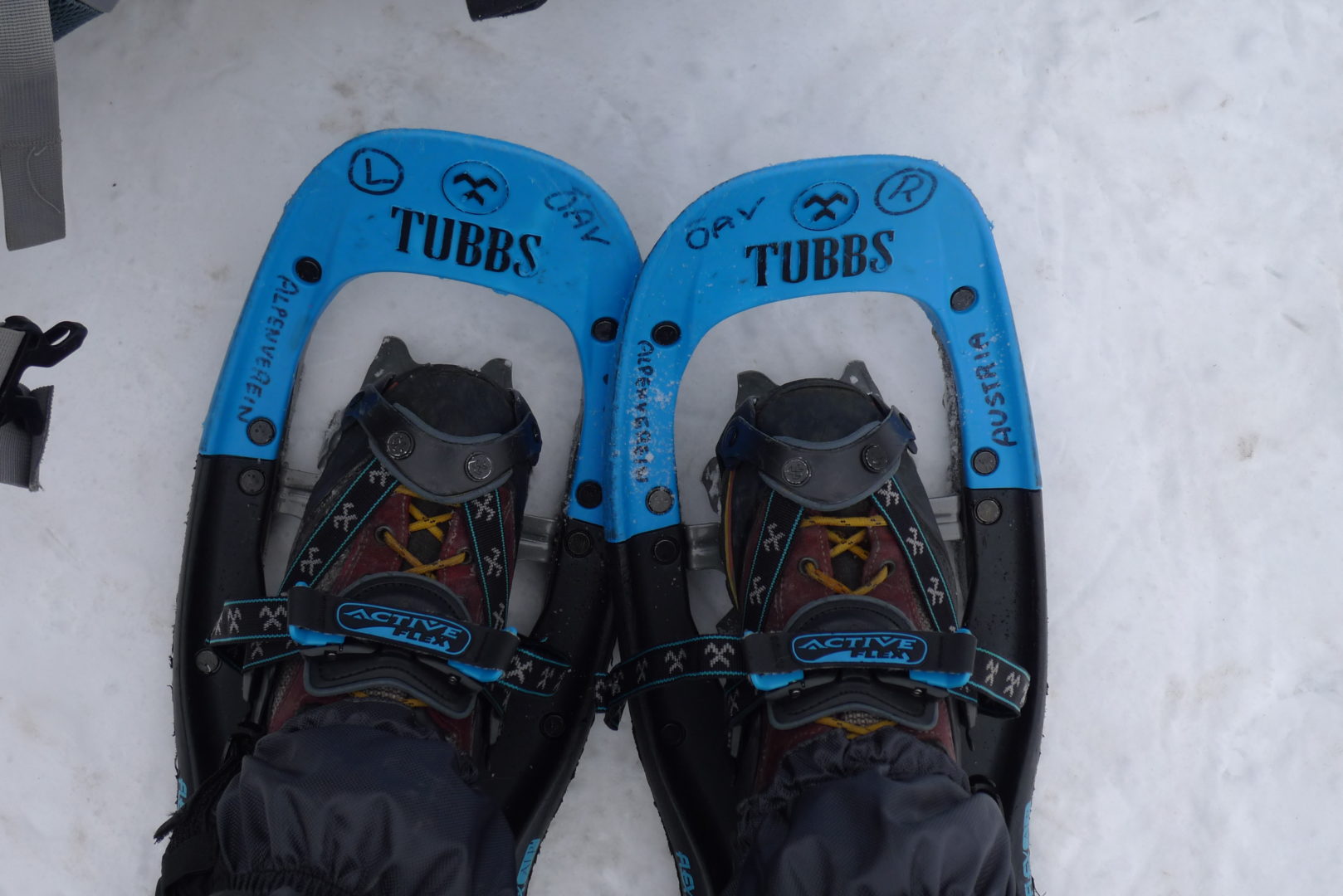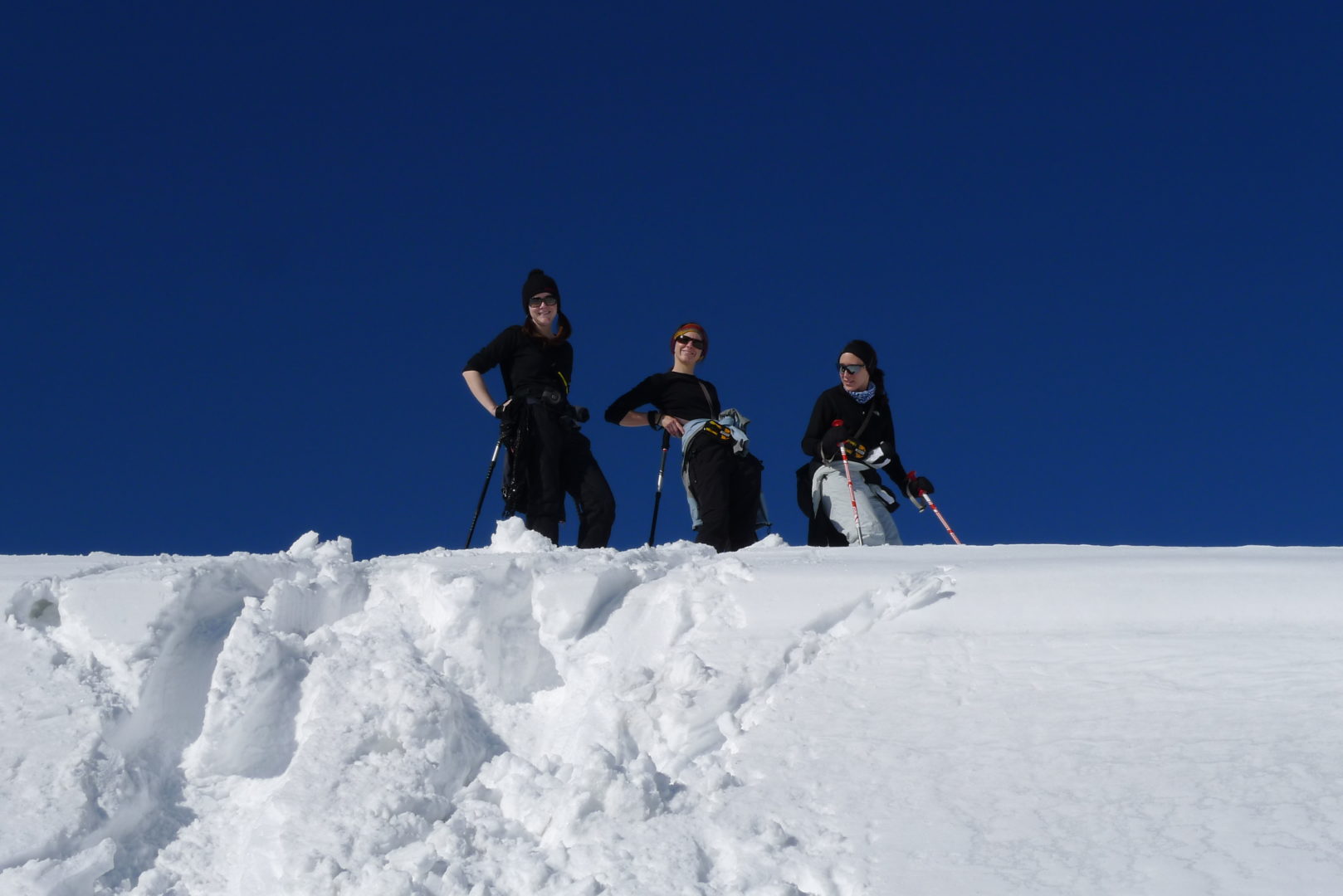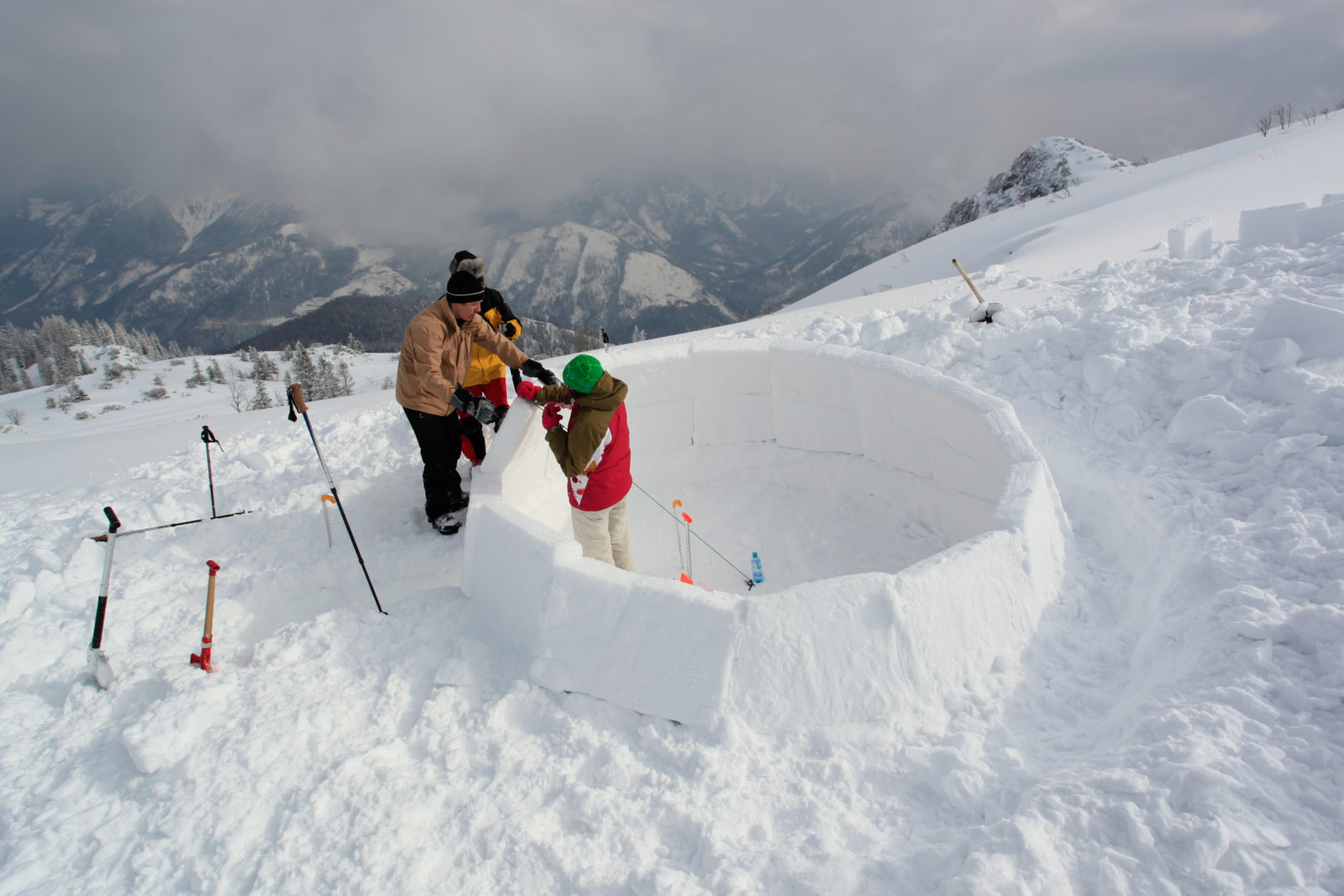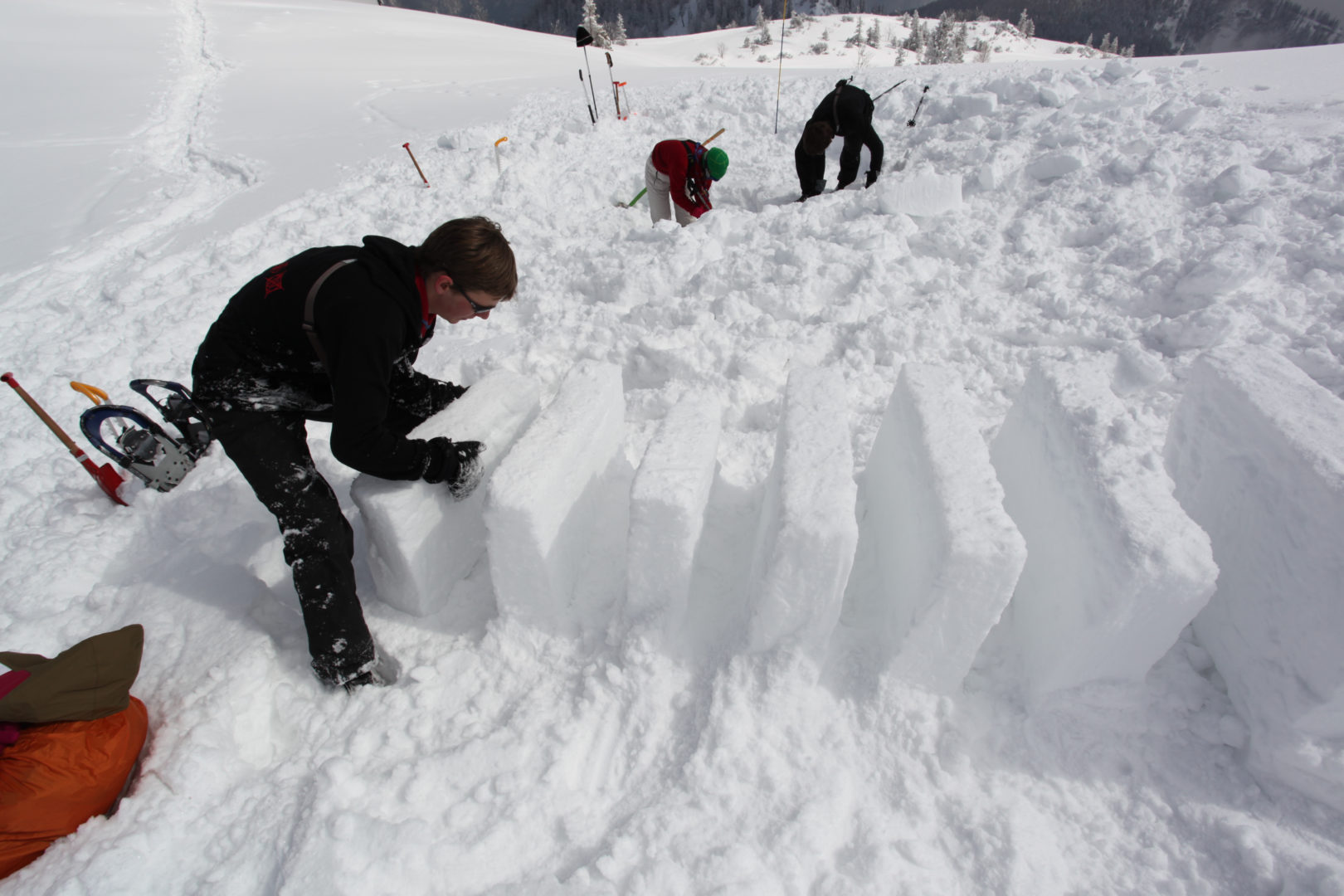Igloo Accommodation in Austria
“May you have warmth in your igloo, oil in your lamp, and peace in your heart” – Inuit proverb
Two degrees Celsius. Brrrr. My gloves drip with ice cold water and my fingers grow numb in the chilly wind. In the depth of winter, we fight through the mist of the cracking dawn to drive up to Mount Rax, armed with a load of winter gear and camping equipment.
It is a Saturday like no other: my friends and I have decided to do something different this weekend. Instead of a boozy night out in Vienna, we’ve signed up for an igloo building workshop, to spend the weekend in the mountains just an hour outside of Austria’s capital and reconnect with nature. The workshop, conducted by the Austrian Alpine Club, is one of their weekend winter seminars.
Over the weekend, we will learn how to build a shelter made of nothing but snow. For hundreds of years, the Inuit (generally known as Eskimos) have built igloos for shelter and as a place to live. Today, knowing how to build an igloo or snow shelter can be a useful tool for any mountaineer – whether you’re an advanced alpinist or an amateur like us.
Fun in the snow
After meeting our instructors, we take the cable car up to the Rax Plateau, which stands high above the pointed peaks at 1547 metres above sea level. The sun bursts out of the wispy clouds and is now in full view. It looks like we are not going to be shivering in the sub-zero temperatures for long.
With snowshoes strapped on, we make our way across the terrain. We have everything we need to survive for two full days in the mountains – from thick parkas to double-layered fleeces and camping gear. There is no way we are going to let the cold ruin our weekend.

After snowshoe hiking for an hour, we reach what will be our building site: a narrow valley filled with tons of snow that has been accumulating over the past few months.

It is time for our first mission: digging a trench for our igloo site. Armed with shovels, we start by piling up mounds of white powder, working up quite a sweat under the sun. The snow sparkles in the bright rays and the whiteness of our surroundings is blindingly beautiful.
By noon, we’ve dug out a circular trench deep enough for our igloo. Now we have to start on some actual building. Gathering up snow to form rectangular blocks, we look like children building sand castles on a beach – except that we are in freezing temperatures. The wind slowly picks up and as the temperature drops we are reminded that we have to be quick to finish the igloo before sunset.

Using a sharp saw, we slice up the snow chunks into evenly sized slabs, which will form the building blocks of our much anticipated igloo. And gradually, it starts to take shape. The blocks fit together seamlessly, almost like the sturdy stones of the Egyptian pyramids. Our igloo now has a perfect hemispheric shape and a stable structure. The last rays of the ebbing sun fade in the distance – we don’t have much time left. Our next challenge: to dig an exit tunnel. Since the igloo walls curve in, one of our teammates has to stand inside the igloo to support the blocks.

“Don’t let it slip, this is crucial!” our guide warns as Robert gently pushes the last block of snow up against the top of the curved walls. This is the final and most critical step in the whole construction process, as this last block needs to hold the entire igloo together. We certainly don’t want our roof caving in!
As Robert pushes the last slab in place like the last piece of a jigsaw puzzle, we cheer in unison, almost as if we have reached the finishing line of a race. It took us over seven hours to build our temporary abode for the weekend, but the end result has made it all worthwhile.

As the sun sets dramatically behind the white mountains, we sit by our igloo, beaming with pride, drunk on a natural high. This was what we’d come to the mountains for. No weekend in Vienna could beat it.
How to learn how to build an igloo:
- Check with your local Alpine Club
- Igloo Building Workshops Kühtai, Tirol: www.iglu-village.at/en/


